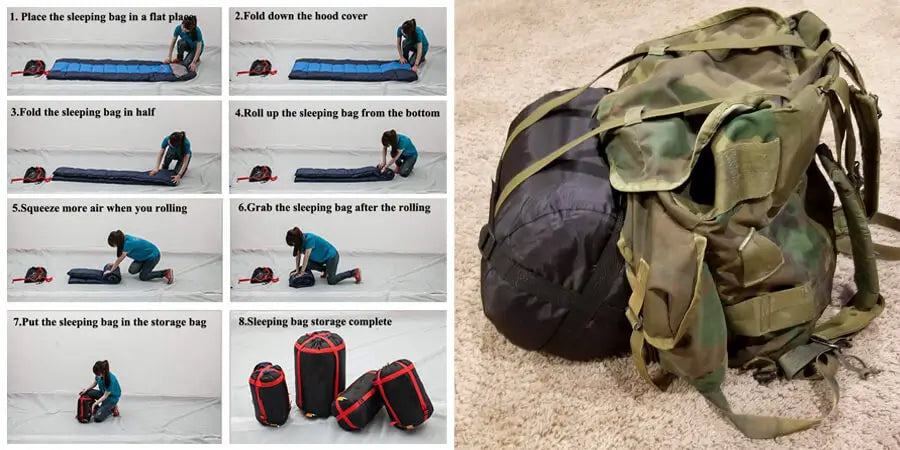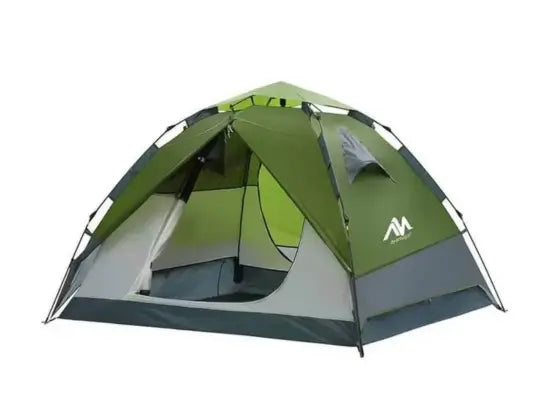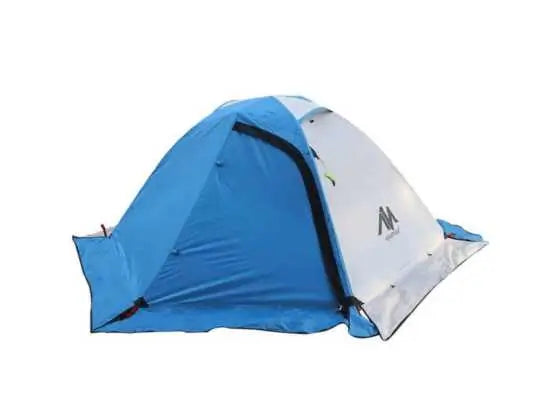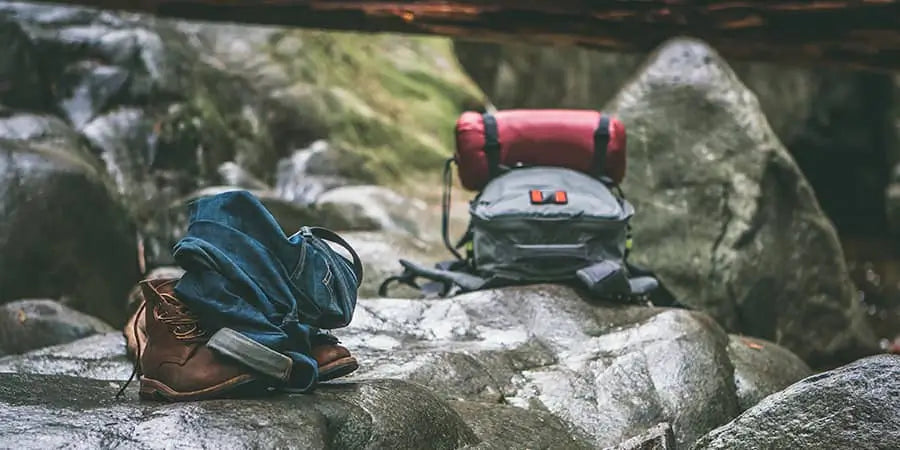After that sound sleep, you will want to store your sleeping bag, but not in a way that will hurt its structure. How will you keep your sleeping bag? This article will take you through the tips for storing a sleeping bag. Keeping a sleeping bag is not a practice that happens after asleep, but between trips also.
The home storage activities for the sleeping bag are often simple. First, you will extract from the stuff, do a thorough drying, store it in a large breathable cotton or a mesh sack, then choose a dry and cool place where you can keep it.
The steps above sound more straightforward, but what if we do it systematically? Of course, it will be even better! Hold on, and allow us a minute to elaborate on the best tips for storing your sleeping bag.
Note that your sleeping bag does not need too much compression!

Maybe you wonder how, but like any other object, too much compression will hurt the structure, the fills, and the durability. Your sleeping bag has an insulation loft which is a key for warmth during sleep. Two types of fillings are available; synthetic and down fill, but both need fillings to have the fluffs. The fluffs create air spaces within the insulation, which is why you experience comfort when you are sleeping on a sleeping bag.
Too much compression interferes with lofts, and you will feel the cold because of the compressed loft underneath. The bottom of your sleeping bag will feel cold. It will even worsen as you sleep because your weight will increase the compression, and it will be necessary to sleep on a sleeping pad.
Leaving your bag under prolonged compression will hurt the resilience of the lofts for both synthetic and down lofts. Though the lofts are well structured, condensation will leave them in a compromised state. The situation is even worse when you are compressing a synthetic loft.
Drying out your sleeping bag
You expose your sleeping bag to due, snow, and mild dew when you are at a campsite. It implies that your sleeping bag can quickly develop molds if you do not properly store it. Before you even think of stuffing your sleeping bag in a sack, you should hang it to dry. The first step for effective drying is a complete unzip, then place it over a line or a large hanger. Your sleeping bag does not need direct UV rays because it will it may weaken the fabric.
Do not just sit there and wait for your sleeping bag to dry! There are rings you can do to speed up the process. You wait for an hour or so and turn it around or a back right side as you allow it time to dry. If you own a sleeping bag with a waterproof outer shelf, such a practice will be helpful.
If you stay in an enclosed space with no outdoor drying space, you can set the temperatures and dry it under controlled heat. You can select a fan or a dehumidifier to speed up the drying process.
There are other ways to speed up the drying process, such as tossing two or three clean tennis balls into the dryer to fluff up the fill and allow a uniform drying. When drying your sleeping bag in heat, set it on low heat and frequent the checks lest it burns.
Now, when your sleeping bag is dry, the following process is to store it! Check out the best places to keep your sleeping bag below.
Humid and temperature-controlled locations are good.
When storing your sleeping bag, ensure that you choose a suitable place that does not suffer high humidity. It should also not be so close to high temperatures positions. Car trunks may not be an option because they are susceptible to high temperatures.
Look for a breathable sack.
The sack that will be storing your sleeping bag should be breathable. It implies that the position that your bag will be staying in needs to be roomy to allow air circulation. There are many types of bags, but the best one is that which will come with your sleeping bag. The bag will keep the sleeping bag safe and won't compress it to affect the fills. Though some bags do not have large sleeping bags, it may be wise to consider a giant sleeping bag. You may feel a king-size pillowcase, or better get any other bag that will do safe storage.
Make some hanging hooks.
If you do not want to risk anything, it will be good to make hanging hooks and leave your sleeping bag hanging as it awaits subsequent use. Some sleeping bags have attached clips to ease the process of hanging. The advantage of hanging hooks is that they will allow free air circulation along with the fills, and you won't expose your bag to any compression. If you are moving to a house with a large storage room, make some hooks to help you properly store your sleeping bag.
You can place your sleeping bag on a shelf.
A small sleeping bag can compress your bag hurting the fills. What if you loosely fold it and place it on a shelf? It is an option for people who have ample closet space.
A cotton sack will also be helpful.
Another idea that you can use to store your sleeping bag is placing it in a cotton sack. Cotton has a piece of soft fabric, and it won't interfere with the fills of your sleeping bag.
Finally, a plastic tub can also do!
If you are camping in attic conditions, you may need something more protective. A plastic tub is an option or any other storage item that uses a Rubbermaid tub.
Conclusion
The goal here to is to store a sleeping bag properly. All the options above are viable. Your budget will determine the choices that you make. Hopefully, the article was helpful to you, dear reader.









